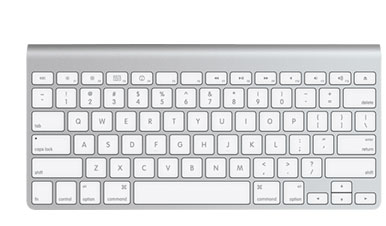A few days on from the Apple ‘Antennagate’ Press Conference, I thought I’d share a few thoughts about how Apple’s presentation of the facts went, and what it means for iPhone 4 users.
Steve Jobs did his usual bit of good showmanship in order to try and explain the problem and put it in the best possible light, but came across to me as slightly off form, maybe because he was being especially careful not to ‘mis-speak’ and make the situation any worse.
There was much made about the anechoic testing facilities, and the apparent revelation (at 13:16 into the video) that they knew that this phenomenon existed, but didn’t think it was a big thing given that it affected all other Smartphones. Whether they thought to try and improve this area over other Smartphones and failed is another mystery.
“We tested it, we knew that if you gripped in a certain way, the bars are gonna go down, just like all Smartphones. We didn’t think it would be a problem, because all Smartphones are like this“.
Which sounds remarkably like ‘if the other bears will crap in the woods, so shall we’, which is a rare admission for Apple.
What did rub with me was the emphasis on ‘hard data’ but I thought that it was highly selective and couched in certain terms. For example, the quotes on statistics from AppleCare were described as ‘just a few days old’. Well I actually would have liked to have know just how many days (a few could imply 3-7 days), and given that most of the negative mass media press had occurred in the previous 7 days, there could have been a big ramp in the number of complaints (or queries) regarding this. Also the AT&T drop rates, described more accurately as 3 days old, were presented as a ‘delta’ over the 3GS. No comparison with other smartphones, and no idea what range of drop rates might be expected on other Apple iPhones. So by describing the problem as affecting less than 1 call per hundred as a delta is only meaningful if you know what the baseline is. If the 3GS experiences a drop rate of 1 call per hundred, then you have made the drop rate 100% (or twice) as bad, and I’d think that would be described as a serious deviance. If on the other hand the 3GS experiences a drop rate of 10 in 100 (or 1 in 10), then an additional 1 call would be less of a problem, and could be natural variance depending on the geographic distribution of 3GS vs. 4. Note that each time any statistic was brought in it was prefixed with a speculative big number (‘you’d think that 50% of calls were being dropped’), which is a marketing technique to make something seem better than reality.
The later part of the presentation seemed to speak more of the problem, but I also think it could be ruse. Data was presented relating that 80% of iPhone 3GS users made a case purchase at the original point of sale, whereas only 20% of iPhone 4 purchasers did so, partly due to stock availability at launch. Most everyone knows that whilst Apple designs beautiful products, a case is pretty much an essential accessory. Even comparing with the 3GS and its internally mounted antenna, it implies that a case somehow mediates the effects of the phone grip. However, a case cannot change the density of your hand (if anything, it can only make it worse), but it can effect a change in electrical conductivity which bridging of the antennas on the iPhone 4 can apparently suffer from. So is the case a fix? Well, its only being offered through to 30th September, with a promise to review the situation then. I’d speculate that it means that Apple are either working on a hardware change (coating of one or both antenna parts), or that they are investigating whether a software change can be made to detect the level of conductance between the antennas and then adjust the antenna signal through signal processing to recover some of the loss. If that was the case, then as Steve Jobs proposed, this might actually be a good thing for the Smartphone market as a whole (although why he was at pains to compare only Smartphones, I’m not sure).
Either way, Apple seem to have brought themselves some time to work further on the problem, but a problem it remains for a percentage of users, no matter how much Apple loves all its users.



